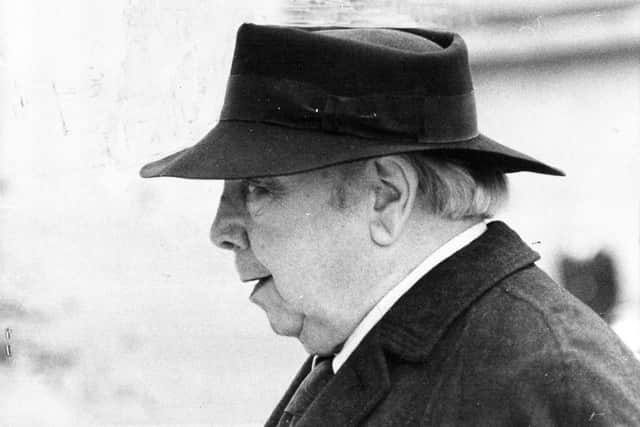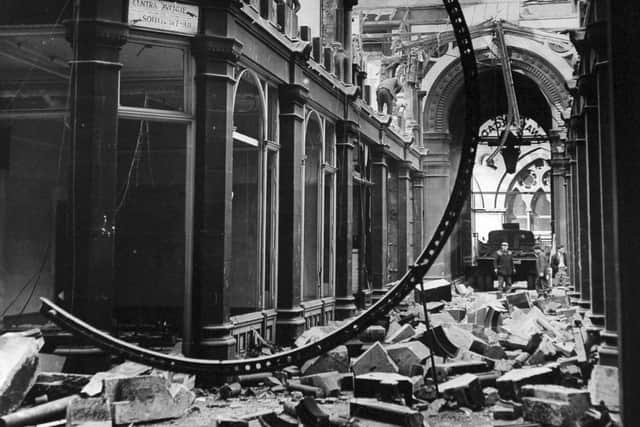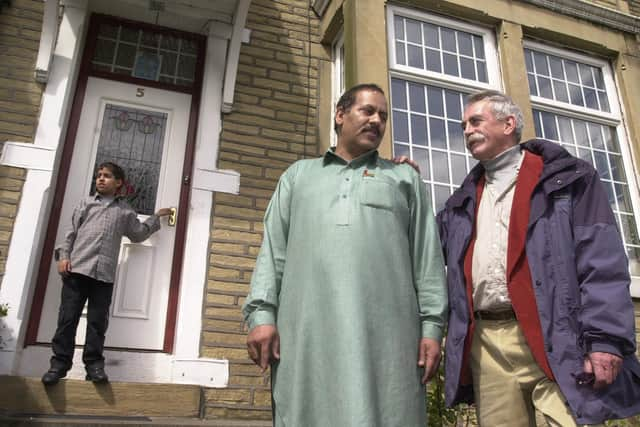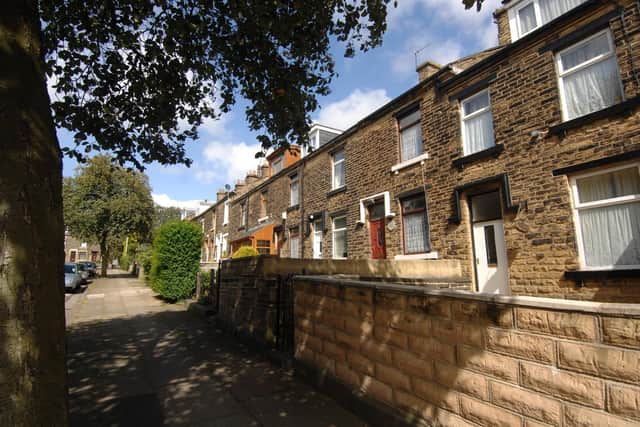Lost City: Rare BBC film of writer J B Priestley visiting Bradford shown to the public for the first time since 1958
Bradford Civic Society managed to obtain rarely-granted permission from the BBC to screen Lost City to 60 people at a sell-out event last night.
The film depicts the celebrated writer J B Priestley returning to the city where he was born and raised to lament how much it had changed since its Edwardian heyday.
Advertisement
Hide AdAdvertisement
Hide AdModern viewers may have been amused to hear him reminiscing in 1958 about a 'golden age' that he believed had already disappeared well before the woollen industry collapsed, when mills were still trading, the city centre was still thriving and before controversial 1960s redevelopment projects had been completed.


Yet according to J B Priestley Society chair Lindsay Sutton - himself a Bradfordian - the 'lost' city of the title refers to the pre-war society that the playwright and social commentator felt had vanished with the advent of the car.
The black and white footage begins with a raincoat-clad Priestley arriving into Bradford Forster Square Station by steam train after 40 years away. After serving in World War One and being gassed, he took up a place at Cambridge, never returned home and instead went to London to launch his literary career.
He is met by a 'press pack' and takes one journalist, a woman named Mavis Dean, under his wing and lets her shadow him, first to his accommodation at the Midland Hotel and then around his old haunts. As Lindsay reveals, many viewers never realised that Mavis wasn't a real reporter - she was a music teacher at a local grammar school and J B Priestley Society member playing a part.


Advertisement
Hide AdAdvertisement
Hide Ad"She played it well, and without it being a double act it would never have been such a success. She was sharp and knowledgeable, and she was a real character and a force of nature."
The film starts poignantly with Priestley telephoning old friends from his childhood from his hotel room, only to discover most have died - many of them in 1916 when the Bradford Pals went over the top.
He visits Swan Arcade, where he started his first job after leaving grammar school at 16 in 1910. He spent four years as a clerk for wool firm Helm & Co. Yet he is disappointed by the arcades of 1958, with the mills' offices replaced by shops selling 'feminine fripperies' rather than the tailors, wine and spirit merchants he remembered from his youth. The Swan Arcade, built in 1877, was demolished just four years later.
He returns to his childhood home in Manningham, then an upmarket suburb popular with mill managers but later to decline, and spends time in the markets with their and pea and pie stalls and the old bookseller's where he developed his love of reading and which was still trading in 1958.


Advertisement
Hide AdAdvertisement
Hide AdHe laments the loss of theatres and music halls, citing the increase in car ownership as a reason the Edwardian entertainment and cultural offering died as mill owners moved from Manningham to Harrogate, Ilkley and the Dales.
"Priestley had a lot of nostalgia for a golden era. He hadn't been back since 1914. He never forgot Bradford's influence on his work, and the city was not lost forever, but lost to him. It was a provocative title and in black and white, the place looked grim," concedes Lindsay.
"Growing up, he had seen that Edwardian and post-World War One wealth, when more Rolls-Royces were sold in Bradford than in London. Arts and culture boomed before the mill owners moved out. 1958 was still before the financial collapse of the industry, but he was comparing it to the heyday.
"There was a furore about the film before it even came out, with people feeling it cast judgement and that they were not 'lost'. Priestley was just disillusioned; half his mates had died in the war and in the 1920s and 30s there was no promised land. He used that awful phrase 'feminine fripperies' about the shops, but he meant that it lacked things of real substance like the wool offices and trading areas. I'm not even sure if he ever visited Bradford again after 1958, though he did love going to the Dales." (The Yorkshire Post picture archives show images of Priestley in Bradford in the 1960s and 70s, when he visited the university. He died in 1984).


Advertisement
Hide AdAdvertisement
Hide AdThe BBC never repeated Lost City after it was first broadcast that year, and it has been difficult to get hold of the 'misunderstood' film since then, though Society members have viewed it privately.
"It was a powerful film and Priestley could always appeal to people's instincts of Englishness and of saving the country - he could get to that heart."
Si Cunningham from the Bradford Civic Society added: "The film is something of a rarity in the sense that you need special permission from the BBC to screen it. We worked with the Bradford City of Film team to obtain permission.. We thought it was an appropriate thing to show in the year that Bradford Civic Society celebrates its 80th anniversary.
"The origins of the Society in the 1940s were very much focused on Bradford city centre at a time of great change and comprehensive redevelopment. It's the reason for our existence, really. Those changes to Bradford, and what followed in the postwar years, are very much the essence of Priestley's film.
Advertisement
Hide AdAdvertisement
Hide Ad"It really is a must-watch for those who are fascinated about how Bradford has developed in the last 80 years."
Interested in all things Yorkshire heritage? We’ve just launched a free newsletter to bring you the latest stories straight to your inbox. You can sign up here: https://www.yorkshirepost.co.uk/newsletter
Comment Guidelines
National World encourages reader discussion on our stories. User feedback, insights and back-and-forth exchanges add a rich layer of context to reporting. Please review our Community Guidelines before commenting.

